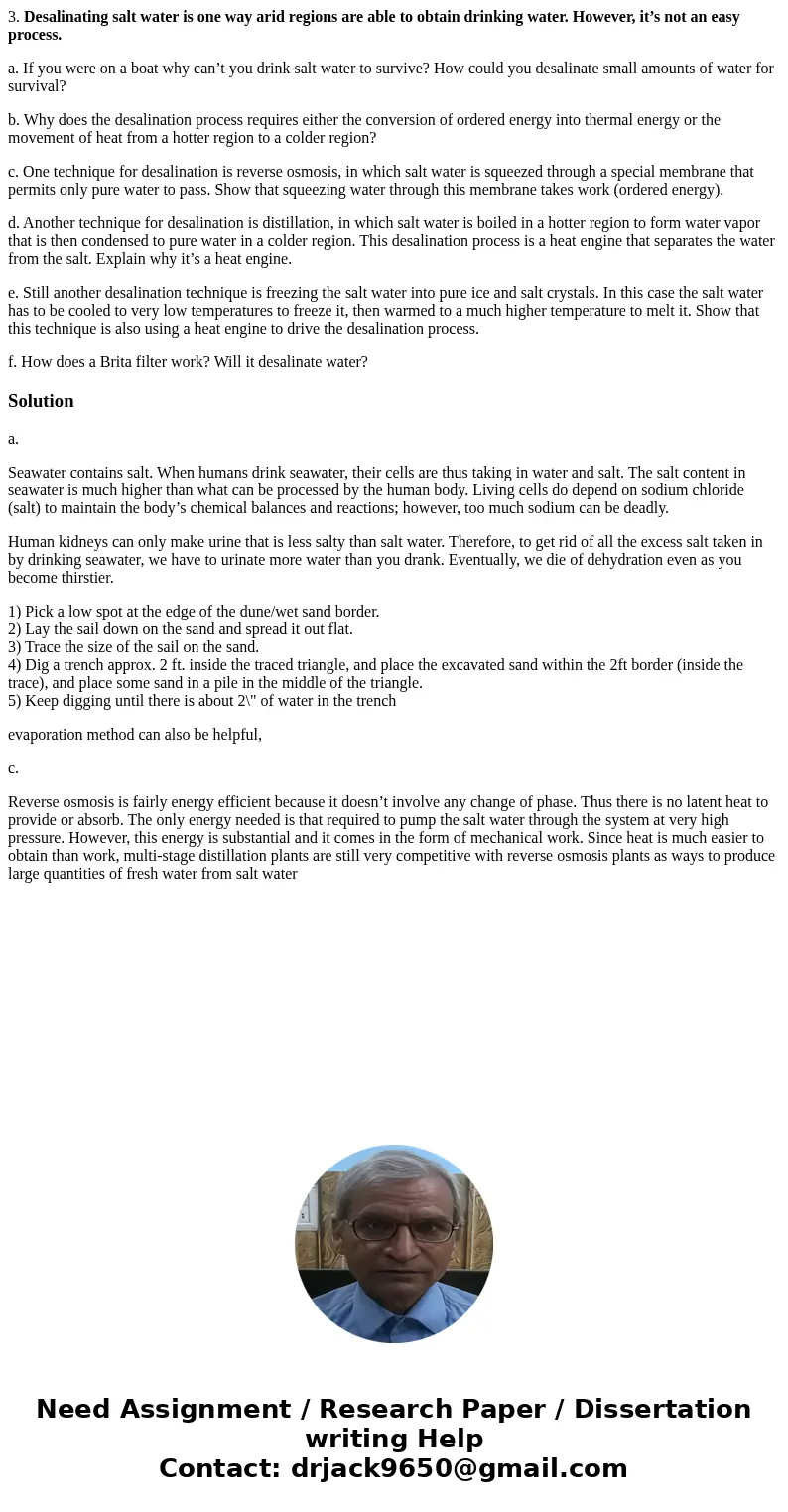3 Desalinating salt water is one way arid regions are able t
3. Desalinating salt water is one way arid regions are able to obtain drinking water. However, it’s not an easy process.
a. If you were on a boat why can’t you drink salt water to survive? How could you desalinate small amounts of water for survival?
b. Why does the desalination process requires either the conversion of ordered energy into thermal energy or the movement of heat from a hotter region to a colder region?
c. One technique for desalination is reverse osmosis, in which salt water is squeezed through a special membrane that permits only pure water to pass. Show that squeezing water through this membrane takes work (ordered energy).
d. Another technique for desalination is distillation, in which salt water is boiled in a hotter region to form water vapor that is then condensed to pure water in a colder region. This desalination process is a heat engine that separates the water from the salt. Explain why it’s a heat engine.
e. Still another desalination technique is freezing the salt water into pure ice and salt crystals. In this case the salt water has to be cooled to very low temperatures to freeze it, then warmed to a much higher temperature to melt it. Show that this technique is also using a heat engine to drive the desalination process.
f. How does a Brita filter work? Will it desalinate water?
Solution
a.
Seawater contains salt. When humans drink seawater, their cells are thus taking in water and salt. The salt content in seawater is much higher than what can be processed by the human body. Living cells do depend on sodium chloride (salt) to maintain the body’s chemical balances and reactions; however, too much sodium can be deadly.
Human kidneys can only make urine that is less salty than salt water. Therefore, to get rid of all the excess salt taken in by drinking seawater, we have to urinate more water than you drank. Eventually, we die of dehydration even as you become thirstier.
1) Pick a low spot at the edge of the dune/wet sand border.
2) Lay the sail down on the sand and spread it out flat.
3) Trace the size of the sail on the sand.
4) Dig a trench approx. 2 ft. inside the traced triangle, and place the excavated sand within the 2ft border (inside the trace), and place some sand in a pile in the middle of the triangle.
5) Keep digging until there is about 2\" of water in the trench
evaporation method can also be helpful,
c.
Reverse osmosis is fairly energy efficient because it doesn’t involve any change of phase. Thus there is no latent heat to provide or absorb. The only energy needed is that required to pump the salt water through the system at very high pressure. However, this energy is substantial and it comes in the form of mechanical work. Since heat is much easier to obtain than work, multi-stage distillation plants are still very competitive with reverse osmosis plants as ways to produce large quantities of fresh water from salt water

 Homework Sourse
Homework Sourse